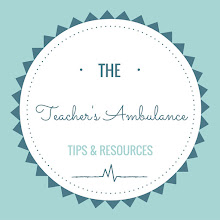Lately I have made a discovery for myself.
Usually I start teaching tenses for my students with the Present Simple, which is quite logical. It is the first tense you use to say anything in English: your name, your age, where you live, what you like. I thought having students understood their first grammar structure correctly is very nice. From the very first lessons, they would know how to use at least some structure in a right way. Isn't it great? No, it's not. Believe me it's bitter truth for me too.
The thing is Present Simple has a lot rules to remember. Put yourselves in your students' shoes. You come to a class full of enthusiasm that you will try to do your best to master that language which you have been studying for years and you face the next bunch of rules:
- Plural forms and exceptions
- Forms of the verb 'to be'
- SV structure of the sentence
- Adding -(e)s to the verb in second person singular (I mean he, she, it)
- Do and does for questions
- Types of guestions (even if you don't plan this, it will come up in a text, excersice or warm-up you choose)
- Don't and doesn't for negatives.
All this comes to your life in a few lessons!
Can you imagine the shock students have to cope with?
Can you imagine the shock students have to cope with?
My discovery is to start teaching present tenses with Present Continuous!
Advantages:
- You cover the verb 'to be' with its forms.
- Students get general information on negative and interrogative sentence structure.
- It is extremely easy to explain and use.
Finally, I suggest starting teaching grammar tenses with Present Continuous as you should already have guessed!
Please, find links to articles on Present Simple & Continuous:
Present Simple
Present Simple Question
Present Simple Negatives
Present Simple Worksheet
Present Simple Presentation
Please, find links to articles on Present Simple & Continuous:
Present Simple
Present Simple Question
Present Simple Negatives
Present Simple Worksheet
Present Simple Presentation







No comments:
Post a Comment